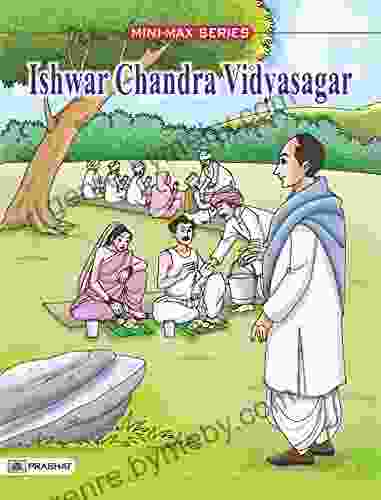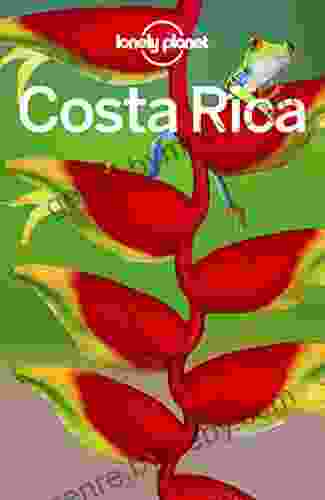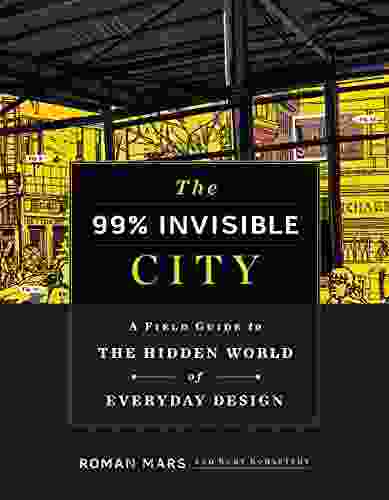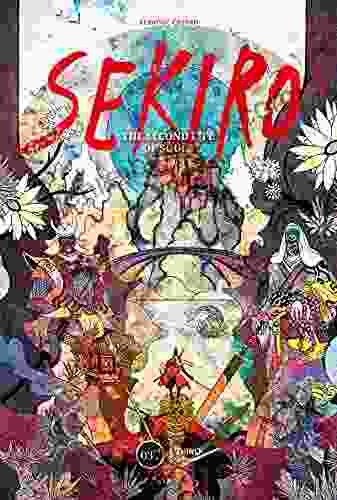Field Guide to the Hidden World of Everyday Design: The Art of the Ordinary

In a world where we are constantly surrounded by designed objects, it's easy to overlook the intricate thought and creativity that goes into shaping our everyday experiences. From the humble toothbrush to the sleek smartphone, every object we interact with tells a story, imbued with a purpose and aesthetic that can evoke emotions, enhance our lives, and even reflect societal values.
4.8 out of 5
| Language | : | English |
| File size | : | 64102 KB |
| Text-to-Speech | : | Enabled |
| Screen Reader | : | Supported |
| Enhanced typesetting | : | Enabled |
| X-Ray | : | Enabled |
| Word Wise | : | Enabled |
| Print length | : | 403 pages |
This comprehensive field guide serves as a gateway to this hidden world of design, revealing the principles, elements, and theories that govern the creation of both functional and beautiful objects. As we delve into the pages of this guide, we will embark on a journey that transforms the ordinary into the extraordinary, unlocking an appreciation for the artistry lurking within everyday objects.
Chapter 1: The Principles of Design: A Foundation for Understanding
At the heart of every well-designed object lies a foundation of fundamental principles that guide its form and function. In this chapter, we will explore these core principles, including:
- Balance: The harmonious distribution of visual weight, creating a sense of stability and equilibrium.
- Contrast: The juxtaposition of contrasting elements, such as light and dark, rough and smooth, to accentuate differences and create visual interest.
- Emphasis: The intentional highlighting of certain elements to draw the eye and convey the object's primary purpose or message.
- Proportion: The harmonious relationship between the sizes and dimensions of different elements, creating visual coherence and pleasing aesthetics.
- Rhythm: The repetition or alternation of elements, generating a sense of movement and visual flow.
Chapter 2: Elements of Design: Building Blocks of Visual Language
The principles of design are brought to life through the skillful use of visual elements. In this chapter, we will delve into the essential elements that form the building blocks of design:
- Line: A fundamental element that conveys direction, shape, and movement.
- Shape: A two-dimensional enclosed area, defined by its boundary and interior.
- Form: A three-dimensional object, characterized by its volume, mass, and spatial relationships.
- Texture: The surface quality of an object, evoking tactile and visual sensations.
- Color: A visual property determined by the wavelength of light, influencing perception, emotions, and cultural associations.
Chapter 3: User Experience (UX): Designing for Delight and Usability
In the digital age, where technology permeates our daily lives, user experience (UX) has become paramount. In this chapter, we will explore the key principles and practices of UX design, ensuring that products and services are both usable and enjoyable:
- Usability: The ease with which users can interact with and navigate a product or service, fostering efficiency and satisfaction.
- Accessibility: The design of products and services that are inclusive and accessible to users with diverse abilities and needs.
- Information Architecture: The organization and structuring of content to enhance findability, comprehension, and navigation.
- Visual Hierarchy: The arrangement of visual elements in a way that guides the user's attention and理解.
- Interaction Design: The design of interactive experiences, such as buttons, menus, and gestures, to facilitate user engagement and task completion.
Chapter 4: Visual Perception: Deciphering the Visual World
Our perception of the world around us is heavily influenced by visual cues and cognitive processes. In this chapter, we will explore the science behind visual perception and how designers harness this knowledge to create visually appealing and meaningful experiences:
- Gestalt Theory: The principles governing how our minds perceive and organize visual information, such as the law of similarity and the law of closure.
- Color Theory: The science behind color perception, including color harmony, contrast, and cultural associations.
- Visual Illusions: Phenomena that trick our visual system, revealing the limitations and biases of our perception.
- Cognitive Psychology: The study of mental processes, including attention, memory, and problem-solving, informing design decisions related to readability, memorability, and cognitive load.
Chapter 5: Cultural Influences: Design Across BFree Downloads
Design is not immune to the influences of culture. In this chapter, we will examine how cultural values, traditions, and beliefs shape the design of objects and environments:
- Cultural Symbolism: The use of symbols and motifs to convey cultural meanings and associations.
- Vernacular Design: The design of everyday objects that reflects local materials, techniques, and cultural practices.
- Cross-Cultural Design: The challenges and opportunities of designing for diverse cultural contexts.
- Semiotics: The study of signs and symbols, providing insights into how cultural meanings are communicated through design.
: The Power of Everyday Design
As we reach the end of our field guide, we have gained a new appreciation for the complexity and artistry that lies hidden within the everyday objects that surround us. From the humble toothbrush to the sleek smartphone, each object tells a story, embodying a unique combination of form and function, influenced by cultural values and shaped by the principles and elements of design.
By understanding the hidden world of everyday design, we unlock a newfound appreciation for the beauty and purpose that can be found in the ordinary. This guide serves as a catalyst, inspiring us to observe the world around us with a more discerning eye, recognizing the artistry that has transformed the mundane into the meaningful.
4.8 out of 5
| Language | : | English |
| File size | : | 64102 KB |
| Text-to-Speech | : | Enabled |
| Screen Reader | : | Supported |
| Enhanced typesetting | : | Enabled |
| X-Ray | : | Enabled |
| Word Wise | : | Enabled |
| Print length | : | 403 pages |
Do you want to contribute by writing guest posts on this blog?
Please contact us and send us a resume of previous articles that you have written.
 Book
Book Novel
Novel Page
Page Chapter
Chapter Text
Text Story
Story Genre
Genre Reader
Reader Library
Library Paperback
Paperback E-book
E-book Magazine
Magazine Newspaper
Newspaper Paragraph
Paragraph Sentence
Sentence Bookmark
Bookmark Shelf
Shelf Glossary
Glossary Bibliography
Bibliography Foreword
Foreword Preface
Preface Synopsis
Synopsis Annotation
Annotation Footnote
Footnote Manuscript
Manuscript Scroll
Scroll Codex
Codex Tome
Tome Bestseller
Bestseller Classics
Classics Library card
Library card Narrative
Narrative Biography
Biography Autobiography
Autobiography Memoir
Memoir Reference
Reference Encyclopedia
Encyclopedia Walter Foster Creative Team
Walter Foster Creative Team Winston Groom
Winston Groom Michael Teitelbaum
Michael Teitelbaum Margo Armstrong
Margo Armstrong Supergokue1 Llc
Supergokue1 Llc Maurissa Guibord
Maurissa Guibord Natalie Baszile
Natalie Baszile Michael Neff
Michael Neff Robert A Cook
Robert A Cook Rachael Herron
Rachael Herron Stephenie Meyer
Stephenie Meyer Terri Dougherty
Terri Dougherty Kristi Smith
Kristi Smith Tom Albrighton
Tom Albrighton Nigel W M Warwick
Nigel W M Warwick Laurentiu Damir
Laurentiu Damir Ronald Mangravite
Ronald Mangravite Michael Dell
Michael Dell Odie Hawkins
Odie Hawkins Robert Caprio
Robert Caprio
Light bulbAdvertise smarter! Our strategic ad space ensures maximum exposure. Reserve your spot today!

 Timothy WardHealthy Food, Healthy Gut, Happy Child: A Comprehensive Guide to Nourishing...
Timothy WardHealthy Food, Healthy Gut, Happy Child: A Comprehensive Guide to Nourishing...
 William ShakespeareAm Thankful Thanksgiving For Kids: A Heartwarming Story of Gratitude and...
William ShakespeareAm Thankful Thanksgiving For Kids: A Heartwarming Story of Gratitude and...
 Avery SimmonsUnveiling the Extraordinary Life and Legacy of Ishwar Chandra Vidyasagar: A...
Avery SimmonsUnveiling the Extraordinary Life and Legacy of Ishwar Chandra Vidyasagar: A... Jesse BellFollow ·8.2k
Jesse BellFollow ·8.2k Craig CarterFollow ·15.1k
Craig CarterFollow ·15.1k Ben HayesFollow ·10.5k
Ben HayesFollow ·10.5k Clarence BrooksFollow ·14.9k
Clarence BrooksFollow ·14.9k Martin CoxFollow ·3.4k
Martin CoxFollow ·3.4k Rick NelsonFollow ·19.3k
Rick NelsonFollow ·19.3k Dawson ReedFollow ·12.9k
Dawson ReedFollow ·12.9k Trevor BellFollow ·8.7k
Trevor BellFollow ·8.7k

 Lee Simmons
Lee SimmonsUnveiling the Enchanting Emerald Isle: A Literary Journey...
A Tapestry of Breathtaking...

 Thomas Hardy
Thomas HardyUnveiling Costa Rica's Enchanting Essence with Lonely...
Embark on an Unforgettable Costa Rican...
 Bryan Gray
Bryan GrayLifting the Veil of Sorrow: A Beacon of Hope for Widowers
Embrace Healing and Find Solace in the...

 John Updike
John UpdikeGrow Your Business and Legacy: An Inspiring Guide for...
Growing Up In The Family Business is an...

 Harrison Blair
Harrison BlairLonely Planet's Western Europe Travel Guide: Your...
Are you planning an unforgettable...
4.8 out of 5
| Language | : | English |
| File size | : | 64102 KB |
| Text-to-Speech | : | Enabled |
| Screen Reader | : | Supported |
| Enhanced typesetting | : | Enabled |
| X-Ray | : | Enabled |
| Word Wise | : | Enabled |
| Print length | : | 403 pages |








